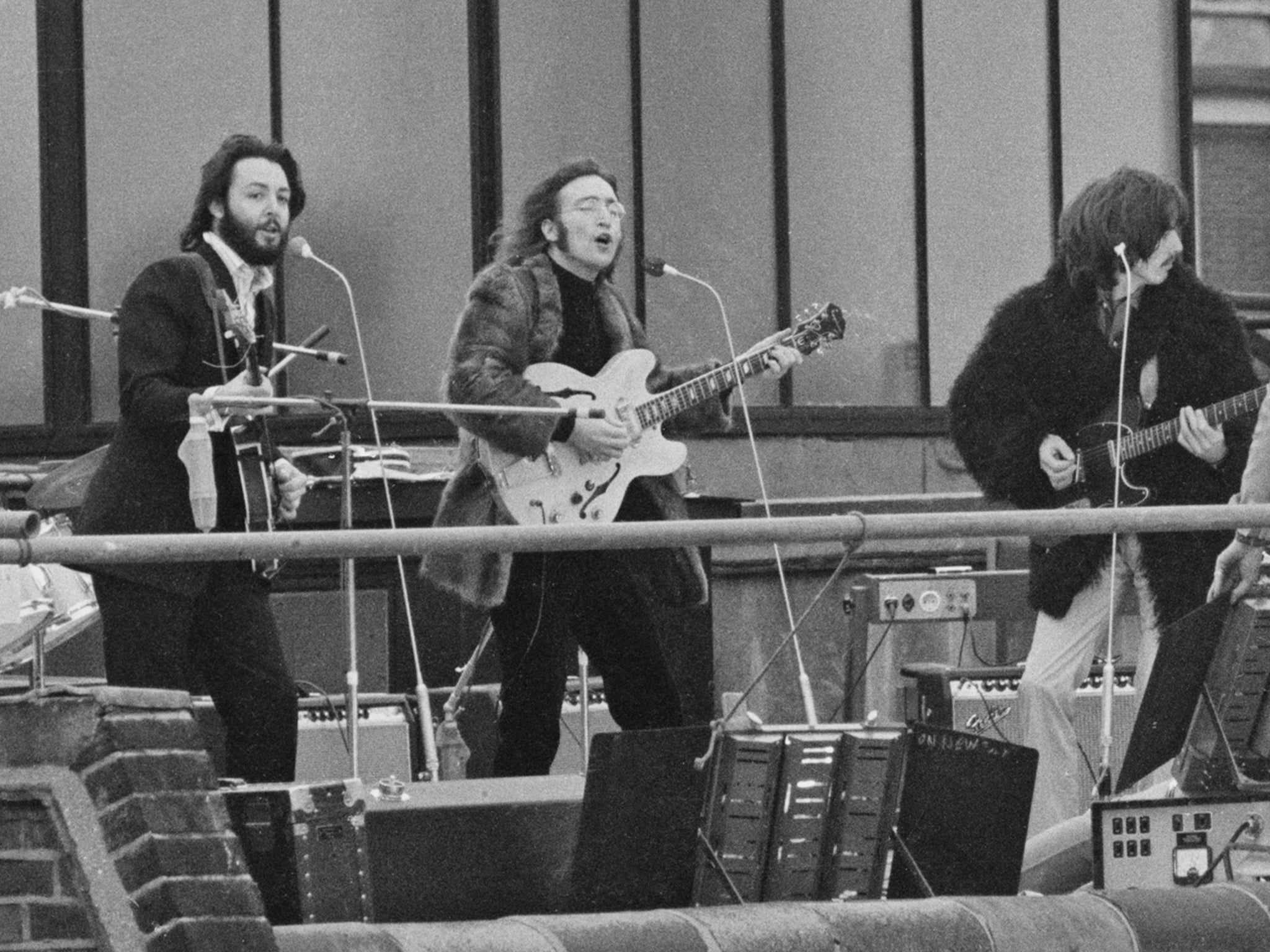The last Beatles song: How artificial intelligence brought the Fab Four together one final time
‘We all play on it, it’s a genuine Beatles recording – In 2023 to still be working on Beatles music... it’s an exciting thing,’ says Paul McCartney. Roisin O’Connor reports


Your support helps us to tell the story
From reproductive rights to climate change to Big Tech, The Independent is on the ground when the story is developing. Whether it's investigating the financials of Elon Musk's pro-Trump PAC or producing our latest documentary, 'The A Word', which shines a light on the American women fighting for reproductive rights, we know how important it is to parse out the facts from the messaging.
At such a critical moment in US history, we need reporters on the ground. Your donation allows us to keep sending journalists to speak to both sides of the story.
The Independent is trusted by Americans across the entire political spectrum. And unlike many other quality news outlets, we choose not to lock Americans out of our reporting and analysis with paywalls. We believe quality journalism should be available to everyone, paid for by those who can afford it.
Your support makes all the difference.For many years, Paul McCartney, Ringo Starr and George Harrison toiled over what they knew would be the last ever Beatles song.
Haunted by the voice of their late bandmate, John Lennon, who sang gently at his piano from his home in New York, the surviving trio sweated in the studio trying to get a clear sound from the muddied recording given to them by Lennon’s partner, Yoko Ono.
For McCartney, the idea of finishing the troubled recording seemed so far away, until AI technology gave the pop pioneer fresh hope.
Almost 50 years since Lennon recorded the earliest version of “Now and Then”, fans will soon be able to hear the last ever Beatles song. One final, stirring encore from the four Scousers who changed music forever.
Working alongside Get Back director Peter Jackson’s team, the final version is due for worldwide release today at 2pm.
But as many Beatles fans will know, today’s gift is yesterday’s curse.
The story of its release is a complicated saga in which only two of the original four will ever get to enjoy these last, bittersweet fruits of their labour.
Despite Lennon having announced his intentions to quit the band in 1969, the Fab Four didn’t officially split until five years later when tensions over Ono’s involvement, disputes over money, Lennon’s heroin addiction, and a clash of creative egos boiled over in an irreparable, ugly and ultimately tragic spat.
Lennon composed “Now and Then” in 1978, two years before he was shot and fatally wounded outside the Dakota building, in New York’s Upper West Side, where he lived with Ono and their son, Sean Lennon.
Recording it using a boombox, he added it to a cassette tape labelled “For Paul”, which Ono gave to McCartney when she found it among his possessions in 1994.
Enjoy unlimited access to 100 million ad-free songs and podcasts with Amazon Music
Sign up now for a 4 month free trial (3 months for non-Prime members)
Enjoy unlimited access to 100 million ad-free songs and podcasts with Amazon Music
Sign up now for a 4 month free trial (3 months for non-Prime members)
The remaining Beatles released two of the songs on the cassette – “Free as a Bird” and “Real Love” – shortly after, aided by producer Jeff Lynne. But despite their attempts in 1995 to work on a version of “Now and Then”, they were forced to shelve the project due to the poor quality of the recording.
“After several days in the studio working on the track, George felt the technical issues with the demo were insurmountable and concluded that it was not possible to finish the track to a high enough standard,” Harrison’s widow, Olivia Harrison, revealed.

Around two decades later, Jackson (best known for his epic fantasy trilogies The Lord of the Rings and The Hobbit) and dialogue editor Emile de la Rey were working on The Beatles: Get Back docuseries, using cutting-edge technology developed by his studio, WingNut Films, to de-mix the film’s mono soundtrack. This way, it became possible to separate the individual voices and unearth conversations that had previously never been heard before.
McCartney wondered, could the same be achieved with the shelved recording he had long considered unfinished business?
Jackson, de la Rey and a dedicated sound team got to work, applying the same technique to separate Lennon’s vocal performance from the piano, while maintaining the integrity and clarity of the original recording.
“There it was, John’s voice, crystal clear,” McCartney says, of the moment he heard Lennon’s clean vocals for the first time. “It’s quite emotional. And we all play on it, it’s a genuine Beatles recording. In 2023, to still be working on Beatles music, and about to release a new song the public haven’t heard, I think it’s an exciting thing.”

He and Starr completed the song last year, using the electric and acoustic guitar parts recorded by Harrison in 1995, along with new drums by Starr, backing vocals, and a yearning strings arrangement written by McCartney, Ben Foster and Giles Martin.
In a poignant final touch, Martin added backing vocals from the original vocals of “Eleanor Rigby”, “Because” and “Here, There and Everywhere”, before producing the final version with McCartney and sending it to Spike Stent to be mixed.
“It was the closest we’ll ever come to having him back in the room so it was very emotional for all of us,” Starr says. “It was like John was there, you know. It’s far out.”
This final chapter of The Beatles’ recorded history will also be marked by two collections — The Beatles’ 1962-1966 (The Red Album) and The Beatles 1967-1970 (The Blue Album) – released with new mixes in true stereo and Dolby Atmos, in both CD and vinyl collections.
The release of “Now and Then” will be preceded by a 12-minute documentary, scheduled for a global premiere on The Beatles’ YouTube channel on 1 November at 7.30pm. The short film tells the full story behind the making of the song, and features exclusive footage from McCartney, Starr, Harrison, Jackson, and Sean Lennon. The official music video will then be debuted on Friday 3 November.
“It was incredibly touching to hear them working together after all the years that Dad had been gone. It’s the last song my dad, Paul, George and Ringo got to make together,” Sean Lennon says. “It’s like a time capsule and all feels very meant to be.”
Join our commenting forum
Join thought-provoking conversations, follow other Independent readers and see their replies
Comments